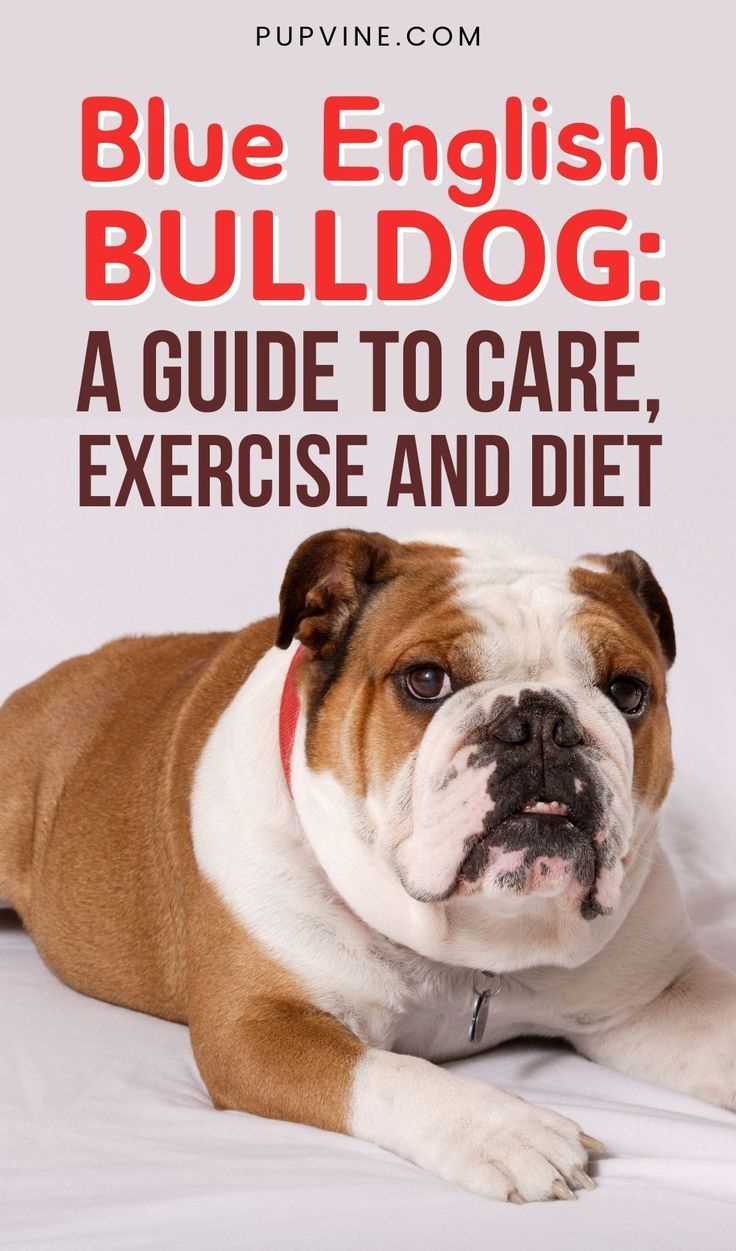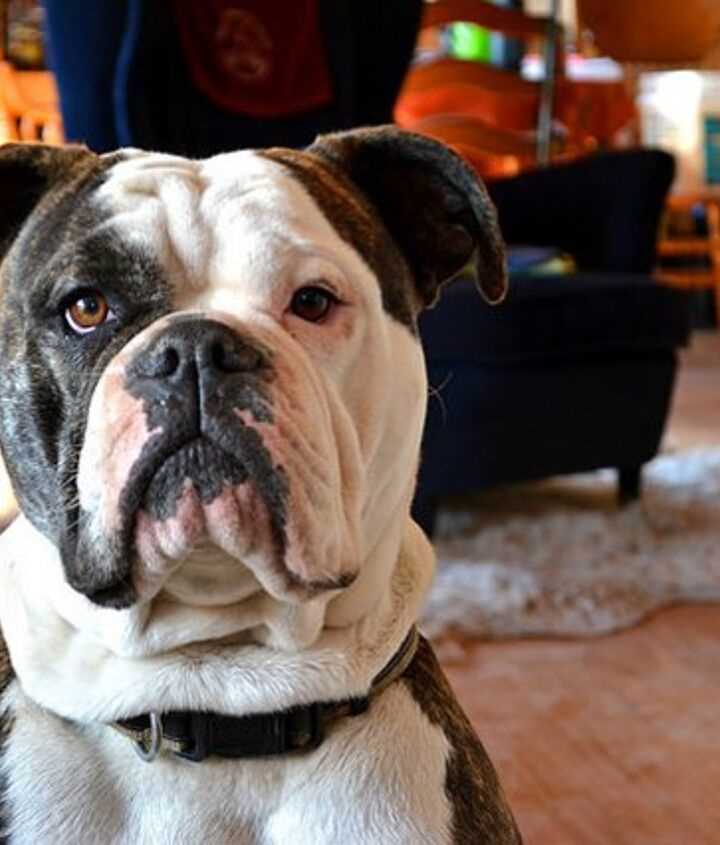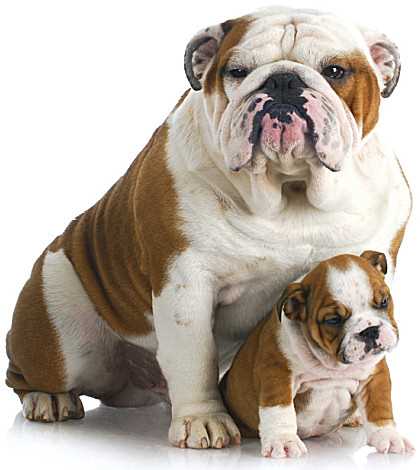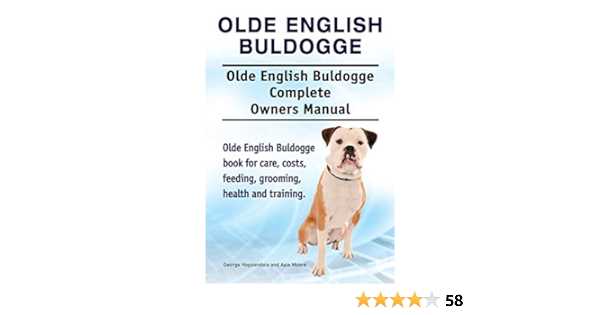
Welcome to our comprehensive guide on the Blue Merle Olde English Bulldog! If you are a dog enthusiast and have a soft spot for unique and stunningly beautiful breeds, then this article is for you. The Blue Merle Olde English Bulldog is a rare and captivating breed that combines the charm and loyalty of the traditional Bulldog with the striking and mesmerizing blue merle coat pattern.
The Blue Merle Olde English Bulldog is a relatively new and lesser-known breed that has been gaining popularity among dog lovers in recent years. With its distinctive coat pattern and robust physique, this breed stands out from the crowd and captures the hearts of those who appreciate the beauty and individuality of these dogs.
One of the most striking features of the Blue Merle Olde English Bulldog is its coat coloration. The blue merle pattern is characterized by a marbled combination of blue, gray, and black patches, often with specks of white. This unique coat pattern is a result of a genetic mutation and is highly sought after by dog enthusiasts and breeders alike. Not only does the Blue Merle Olde English Bulldog have a visually stunning appearance, but it also possesses the classic Bulldog traits of strength, loyalty, and affection.
Welcome to the World of Olde English Bulldogs
The Olde English Bulldog is a unique and fascinating breed that has captured the hearts of dog enthusiasts around the world. With their distinctive appearance and lovable temperament, these dogs make wonderful companions and family pets.
Originating in England, the Olde English Bulldog was bred for bull-baiting in the 18th century. However, as bull-baiting became illegal, the breed nearly disappeared. Thankfully, a group of dedicated breeders worked to revive the Olde English Bulldog, focusing on preserving its original characteristics and improving its health.
One of the most striking features of the Olde English Bulldog is its muscular build and powerful stance. These dogs have a broad chest, strong legs, and a sturdy frame that gives them a confident and imposing presence. Despite their tough appearance, Olde English Bulldogs are known for their friendly and affectionate nature.
Olde English Bulldogs are also known for their unique coat colors, including the blue merle coat. The blue merle coat is characterized by a marbled pattern of blue and gray patches, giving the dog a striking and eye-catching appearance. This coat color is highly sought after by dog enthusiasts and adds to the breed’s overall charm.
In addition to their physical attributes, Olde English Bulldogs are known for their loyal and protective nature. They are excellent family dogs and get along well with children and other pets when properly socialized. However, they can be stubborn at times, so consistent training and positive reinforcement are essential to ensure they grow into well-behaved and obedient dogs.
When it comes to caring for an Olde English Bulldog, regular exercise and a balanced diet are crucial. These dogs have a tendency to gain weight, so it’s important to provide them with plenty of opportunities for physical activity. Daily walks, playtime, and mental stimulation are all essential for keeping an Olde English Bulldog happy and healthy.
Overall, the Olde English Bulldog is a wonderful breed with a rich history and a unique set of characteristics. Whether you’re a dog enthusiast or considering adding an Olde English Bulldog to your family, exploring the world of these amazing dogs is sure to be a rewarding experience.
Understanding the Blue Merle Coat Color
The blue merle coat color is a unique and striking feature of the Olde English Bulldog breed. This coat color is characterized by a marbled pattern of blue and gray patches, giving the dog a beautiful and distinctive appearance.
The blue merle coat color is the result of a specific genetic combination. It is a dilution of the black coat color gene, which results in a grayish-blue color. The marbled pattern is created by patches of blue and gray that are randomly distributed throughout the dog’s coat.
It is important to note that the blue merle coat color is not exclusive to Olde English Bulldogs. It can also be found in other breeds such as Australian Shepherds and Border Collies. However, in the Olde English Bulldog breed, the blue merle coat color is quite rare and highly sought after by dog enthusiasts.
One of the reasons why the blue merle coat color is so popular is because of its unique and eye-catching appearance. The marbled pattern of blue and gray patches creates a visually striking contrast that is sure to turn heads wherever the dog goes.
However, it is important to keep in mind that the blue merle coat color is not just about looks. It is also an indication of the dog’s genetic makeup and can affect its health and temperament. Breeders should be aware of the potential health issues that can be associated with the blue merle coat color, such as eye problems and hearing loss.
When choosing a blue merle Olde English Bulldog puppy, it is important to find a reputable breeder who can provide information about the puppy’s lineage and health history. This will help ensure that you are getting a healthy and well-bred puppy.
History and Origins of the Olde English Bulldog Breed
The Olde English Bulldog is a breed that has a rich and fascinating history. This breed has its origins in England and can be traced back to the 18th century. The Olde English Bulldog was developed as a working dog, primarily used for bull-baiting and as a guard dog.
During the 19th century, bull-baiting was banned in England, and the Olde English Bulldog faced extinction. However, a group of dedicated breeders, led by David Leavitt, decided to revive the breed. They wanted to recreate the original working bulldog, but without the aggression that was associated with bull-baiting.
To achieve this, Leavitt crossed English Bulldogs, American Bulldogs, Bullmastiffs, and Pitbulls. The result was the Olde English Bulldog, a breed that retained the strength and athleticism of its ancestors but had a more gentle and friendly temperament.
The Purpose of the Olde English Bulldog Breed
The Olde English Bulldog was initially bred for bull-baiting, a popular sport in England during the 18th century. Bull-baiting involved setting a bulldog against a tethered bull and betting on how long the dog could hold on to the bull’s nose. This activity required a strong and tenacious dog with a powerful jaw.
After bull-baiting was banned, the Olde English Bulldog’s purpose shifted. The breed was used as a farm dog, guarding livestock and property. They were also used as working dogs, helping to control and manage unruly livestock.
The Characteristics of the Olde English Bulldog Breed
The Olde English Bulldog is a medium-sized dog with a muscular build. They have a broad chest, strong legs, and a distinctive wrinkled face. Their coat is short and dense, and they come in a variety of colors, including blue merle.
In terms of temperament, the Olde English Bulldog is known for being loyal, protective, and affectionate. They are intelligent dogs that are eager to please their owners. Despite their tough appearance, they are generally good with children and other pets, making them a popular choice for families.
Overall, the Olde English Bulldog is a versatile breed that can excel in various roles, from being a loyal family companion to a working dog on the farm.
Breed Characteristics and Temperament
The Blue Merle Olde English Bulldog is a unique and beautiful breed known for its distinctive coat color and friendly temperament. Here are some key characteristics and temperament traits of this breed:
- Size: The Blue Merle Olde English Bulldog is a medium-sized breed, with males typically weighing between 60 and 80 pounds, and females weighing between 50 and 70 pounds.
- Appearance: This breed has a muscular and sturdy build, with a broad chest and a thick neck. Their head is large and square, with a wrinkled forehead and a prominent underbite. The Blue Merle coat color is characterized by a mottled pattern of blue and gray patches, which gives them a unique and striking appearance.
- Temperament: The Blue Merle Olde English Bulldog is known for its friendly and affectionate nature. They are loyal and devoted to their families, and they thrive on human companionship. This breed is generally good with children and other pets, making them an excellent choice for families.
- Intelligence: Despite their muscular appearance, Blue Merle Olde English Bulldogs are intelligent and eager to please. They are quick learners and respond well to positive reinforcement training methods. With proper training and socialization, they can be well-behaved and obedient companions.
- Activity Level: While Blue Merle Olde English Bulldogs have a moderate energy level, they still require regular exercise to stay healthy and happy. Daily walks, playtime, and mental stimulation are important for this breed to prevent boredom and maintain their overall well-being.
- Health: Like all dog breeds, Blue Merle Olde English Bulldogs are prone to certain health issues. Some common health problems in this breed include hip dysplasia, allergies, and breathing difficulties. Regular veterinary check-ups and a proper diet are essential for maintaining their health.
Caring for Your Blue Merle Olde English Bulldog
Taking care of a Blue Merle Olde English Bulldog requires a combination of proper nutrition, regular exercise, grooming, and regular visits to the veterinarian. Here are some essential tips to help you care for your beloved pet:
Nutrition
Feeding your Blue Merle Olde English Bulldog a balanced diet is crucial for their overall health and well-being. It is recommended to provide them with high-quality dog food that is specifically formulated for Bulldogs. Avoid overfeeding and monitor their weight to prevent obesity, which can lead to various health issues.
Exercise
Although Blue Merle Olde English Bulldogs are not as active as some other breeds, they still require regular exercise to maintain a healthy weight and prevent boredom. Daily walks and playtime in a secure, fenced area are recommended. Avoid exercising them during hot weather to prevent overheating due to their brachycephalic (short-nosed) nature.
Grooming
The Blue Merle Olde English Bulldog has a short, dense coat that requires minimal grooming. Regular brushing with a soft bristle brush will help remove loose hair and keep their coat looking shiny. Additionally, cleaning their facial wrinkles with a damp cloth will help prevent skin infections. Trim their nails regularly and clean their ears to prevent infections.
Veterinary Care
Regular visits to the veterinarian are essential to ensure the overall health of your Blue Merle Olde English Bulldog. Vaccinations, parasite prevention, dental care, and routine check-ups are necessary to detect and prevent any potential health issues. It is important to follow the veterinarian’s recommendations and schedule appointments accordingly.
Training and Socialization
Proper training and socialization are crucial for Blue Merle Olde English Bulldogs to become well-behaved and well-adjusted pets. Start training them from a young age using positive reinforcement techniques. Socialize them with different people, animals, and environments to help them develop good manners and reduce the risk of behavioral problems.
Health Monitoring
Blue Merle Olde English Bulldogs are prone to certain health issues, including hip dysplasia, allergies, and respiratory problems. Regularly monitor their overall health and behavior for any signs of discomfort or illness. If you notice any changes, consult your veterinarian promptly for proper diagnosis and treatment.
By following these care tips, you can ensure that your Blue Merle Olde English Bulldog remains happy, healthy, and well-adjusted. Remember to provide them with love, attention, and a safe environment to thrive as a cherished member of your family.
Training and Socialization Tips

Training and socialization are crucial for the development and well-being of your Blue Merle Olde English Bulldog. Here are some tips to help you train and socialize your furry friend:
1. Start early: It’s important to begin training and socialization as early as possible. Puppies are more receptive to learning during their early stages of development.
2. Positive reinforcement: Use positive reinforcement techniques, such as treats, praise, and rewards, to encourage good behavior. Bulldogs respond well to positive reinforcement and will be more motivated to learn.
3. Consistency: Be consistent with your training methods and commands. Use the same cues and gestures each time to avoid confusion and help your Bulldog understand what is expected of them.
4. Basic obedience training: Teach your Bulldog basic commands like sit, stay, come, and heel. These commands will help establish your role as the leader and make it easier to control your dog in different situations.
5. Socialization with other dogs: Introduce your Bulldog to other dogs in a controlled and supervised environment. This will help them learn how to interact with other dogs and prevent any aggressive behavior towards them in the future.
6. Socialization with people: Expose your Bulldog to different people, including adults, children, and strangers. This will help them become comfortable around different individuals and reduce their chances of developing fear or aggression towards people.
7. Gradual exposure to new environments: Bulldogs can be sensitive to new environments and may feel overwhelmed. Gradually expose your Bulldog to new places, sounds, and experiences to help them become more confident and adaptable.
By following these training and socialization tips, you can help your Blue Merle Olde English Bulldog become a well-behaved and sociable companion. Remember to always provide a loving and nurturing environment for your furry friend.
Health and Common Health Issues
When it comes to the health of your Blue Merle Olde English Bulldog, it is important to be aware of common health issues that can affect this breed. While Olde English Bulldogs are generally healthy dogs, there are a few conditions that they may be prone to.
One common health issue in Olde English Bulldogs is hip dysplasia. This is a condition where the hip joint does not develop properly, leading to pain and difficulty with movement. Regular exercise and maintaining a healthy weight can help reduce the risk of hip dysplasia in your Blue Merle Olde English Bulldog.
Another health issue that can affect this breed is cherry eye. Cherry eye is a condition where the gland in the dog’s third eyelid becomes prolapsed, causing redness and swelling. In severe cases, surgery may be required to correct cherry eye.
Olde English Bulldogs are also prone to skin allergies and infections. This can be caused by a variety of factors, including food allergies, environmental allergens, and parasites. Regular grooming and keeping your dog’s skin clean and dry can help prevent skin issues.
Additionally, Blue Merle Olde English Bulldogs may be more prone to deafness compared to other coat colors. It is important to have your dog’s hearing tested regularly and take appropriate measures to ensure their safety.
Lastly, like all bulldog breeds, Olde English Bulldogs may be prone to respiratory issues. Their short snouts can make it difficult for them to breathe, especially in hot weather or during exercise. It is important to monitor your dog’s breathing and provide them with a cool and comfortable environment.
Regular veterinary check-ups and a healthy lifestyle can help prevent and manage these common health issues in your Blue Merle Olde English Bulldog. By being proactive and attentive to your dog’s health, you can ensure that they live a long and happy life.
Exercise and Activity Requirements
When it comes to exercise and activity requirements, the Blue Merle Olde English Bulldog is a breed that requires moderate exercise to keep them healthy and happy. While they may not be as high-energy as some other breeds, they still need regular physical activity to maintain a healthy weight and prevent obesity.
It is recommended to provide your Blue Merle Olde English Bulldog with at least 30 minutes to an hour of exercise every day. This can be in the form of walks, playtime in a fenced yard, or interactive games that stimulate their body and mind.
Walking

Walking is a great way to meet the exercise needs of your Blue Merle Olde English Bulldog. It not only provides physical exercise but also mental stimulation as they explore their surroundings. Aim for at least two walks a day, each lasting around 15-30 minutes. This will help keep their muscles toned and their joints healthy.
Playtime
In addition to regular walks, playtime is essential for this breed. They enjoy interactive games such as fetch, tug-of-war, and hide-and-seek. These activities help them burn off excess energy and keep them mentally engaged. Be sure to provide them with sturdy toys that are appropriate for their size and chewing habits.
It’s important to note that the Blue Merle Olde English Bulldog is prone to overheating due to their brachycephalic (short-nosed) structure. Therefore, it’s crucial to avoid exercising them during the hottest parts of the day and provide plenty of water breaks to prevent dehydration.
Training and Mental Stimulation

Exercise for the Blue Merle Olde English Bulldog is not just about physical activity but also mental stimulation. These dogs are intelligent and benefit from training sessions that challenge their minds. Incorporate obedience training, puzzle toys, and interactive feeding methods to keep their brains active and prevent boredom.
Remember to always tailor the exercise routine to your individual dog’s needs and abilities. Some Blue Merle Olde English Bulldogs may require more exercise, while others may be content with less. Monitor their weight and energy levels to ensure they are getting the right amount of exercise for their overall well-being.
Choosing a Blue Merle Olde English Bulldog Puppy
When it comes to choosing a Blue Merle Olde English Bulldog puppy, there are several factors to consider. This unique coat color is highly sought after, but it’s important to make sure you’re selecting a healthy and well-bred puppy. Here are some tips to help you make the right choice:
1. Research reputable breeders: Start by researching reputable breeders who specialize in Olde English Bulldogs with the Blue Merle coat color. Look for breeders who prioritize the health and well-being of their dogs and have a good reputation within the dog community.
2. Visit the breeder: Once you’ve found a breeder that you’re interested in, schedule a visit to their facility. This will give you the opportunity to see the puppies and their living conditions firsthand. Take note of the cleanliness and overall health of the dogs.
3. Observe the puppies: Spend time observing the puppies and their behavior. Look for puppies that are active, curious, and playful. Avoid puppies that appear lethargic or overly shy, as these could be signs of underlying health or temperament issues.
4. Check health clearances: Ask the breeder for health clearances for both the puppy’s parents. This will help ensure that the puppy is less likely to inherit any genetic health issues. Common health clearances for Olde English Bulldogs include hip and elbow evaluations, as well as cardiac and eye exams.
5. Meet the parents: If possible, ask to meet the puppy’s parents. This will give you an idea of what the puppy may grow up to look and act like. It can also provide insight into the temperament and health of the parents.
6. Ask about socialization: Inquire about how the breeder socializes their puppies. Puppies that have been properly socialized from a young age are more likely to grow up to be well-adjusted and confident dogs. Socialization should include exposure to different people, animals, and environments.
7. Get a written contract: Before purchasing a Blue Merle Olde English Bulldog puppy, make sure to get a written contract from the breeder. This contract should outline the health guarantees, return policy, and any other important terms and conditions.
8. Consider your lifestyle: Consider your lifestyle and whether an Olde English Bulldog is the right fit for you. These dogs require regular exercise, mental stimulation, and a lot of attention. Make sure you have the time and resources to properly care for and train a Blue Merle Olde English Bulldog.
9. Prepare your home: Before bringing your new puppy home, make sure you have everything you need to provide a safe and comfortable environment. This includes a crate, bedding, food and water bowls, toys, and a secure outdoor area for exercise.
10. Enjoy the journey: Bringing home a Blue Merle Olde English Bulldog puppy is an exciting time. Enjoy the journey of raising and training your new companion. Cherish the special bond that will develop between you and your furry friend.

Tyler Newsom, a canine enthusiast, is passionate about bulldogs and their coat care. With years of experience and dedication, he shares his expertise to help bulldog owners maintain their beloved pets’ fur health and vitality through practical tips and advice.
